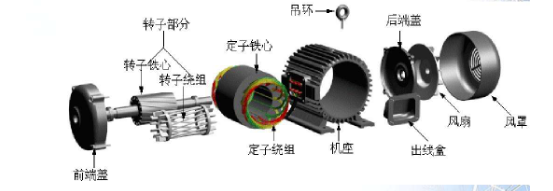The power of the motor should be selected according to the power required by the production machinery, and try to make the motor run under the rated load. When choosing, you should pay attention to the following two points:
① If the motor power is too small. There will be a phenomenon of “small horse-drawn cart”, causing the motor to be overloaded for a long time. Its insulation is damaged due to heat. Even the motor was burned out.
② If the motor power is too large. There will be a “big horse-drawn cart” phenomenon. Its output mechanical power cannot be fully utilized, and the power factor and efficiency are not high, which is not only unfavorable to users and the power grid. And it will also cause waste of electricity.
The most commonly used is the analogy method to select the power of the motor. The so-called analogy. It is compared with the power of the electric motor used in similar production machinery.
The specific method is: to understand the power motor used by the similar production machinery of this unit or other nearby units, and then select a motor of similar power to conduct a test run. The purpose of the test run is to verify that the selected motor matches the production machine.
The verification method is: make the motor drive the production machinery to run, measure the working current of the motor with a clamp ammeter, and compare the measured current with the rated current marked on the nameplate of the motor. If the actual working current of the electric power machine is not much different from the rated current marked on the spleen. It indicates that the power of the selected motor is suitable. If the actual working current of the motor is about 70% lower than the rated current marked on the nameplate. It indicates that the power of the motor is too large, and the motor with smaller power should be replaced. If the measured working current of the motor is more than 40% larger than the rated current marked on the nameplate. It indicates that the power of the motor is too small, and the motor with a larger power should be replaced.
It is suitable for the mutual conduction of the relationship between the rated power, rated speed and rated torque of the servo motor, but the actual rated torque value should be based on the actual measurement. Because of the energy conversion efficiency problem, the basic values are generally the same, and there will be subtle decrease.
For structural reasons, DC motors have the following disadvantages:
(1) The brushes and commutators need to be replaced regularly, maintenance is difficult, and the service life is short; (2) Due to the commutation sparks of the DC motor, it is difficult to apply to harsh environments with flammable and explosive gases; (3) The structure is complex , it is difficult to manufacture a DC motor with large capacity, high speed and high voltage.
Compared with DC motors, AC motors have the following advantages:
(1) Solid structure, reliable operation, easy maintenance; (2) There is no commutation spark, and can be used in harsh environments with flammable and explosive gases; (3) It is easy to manufacture large-capacity, high-speed and high-voltage AC motor.
Therefore, for a long time, people hope to replace the DC motor with a speed-adjustable AC motor in many occasions, and a lot of research and development work has been carried out on the speed control of the AC motor. However, until the 1970s, the research and development of the AC speed control system has not been able to get really satisfactory results, which limits the popularization and application of the AC speed control system. It is also for this reason that baffles and valves have to be used to adjust the wind speed and flow in the electric drive systems such as fans and water pumps that are widely used in industrial production and require speed control. This approach not only increases the complexity of the system, but also results in wasted energy.
By Jessica
Post time: Mar-17-2022

